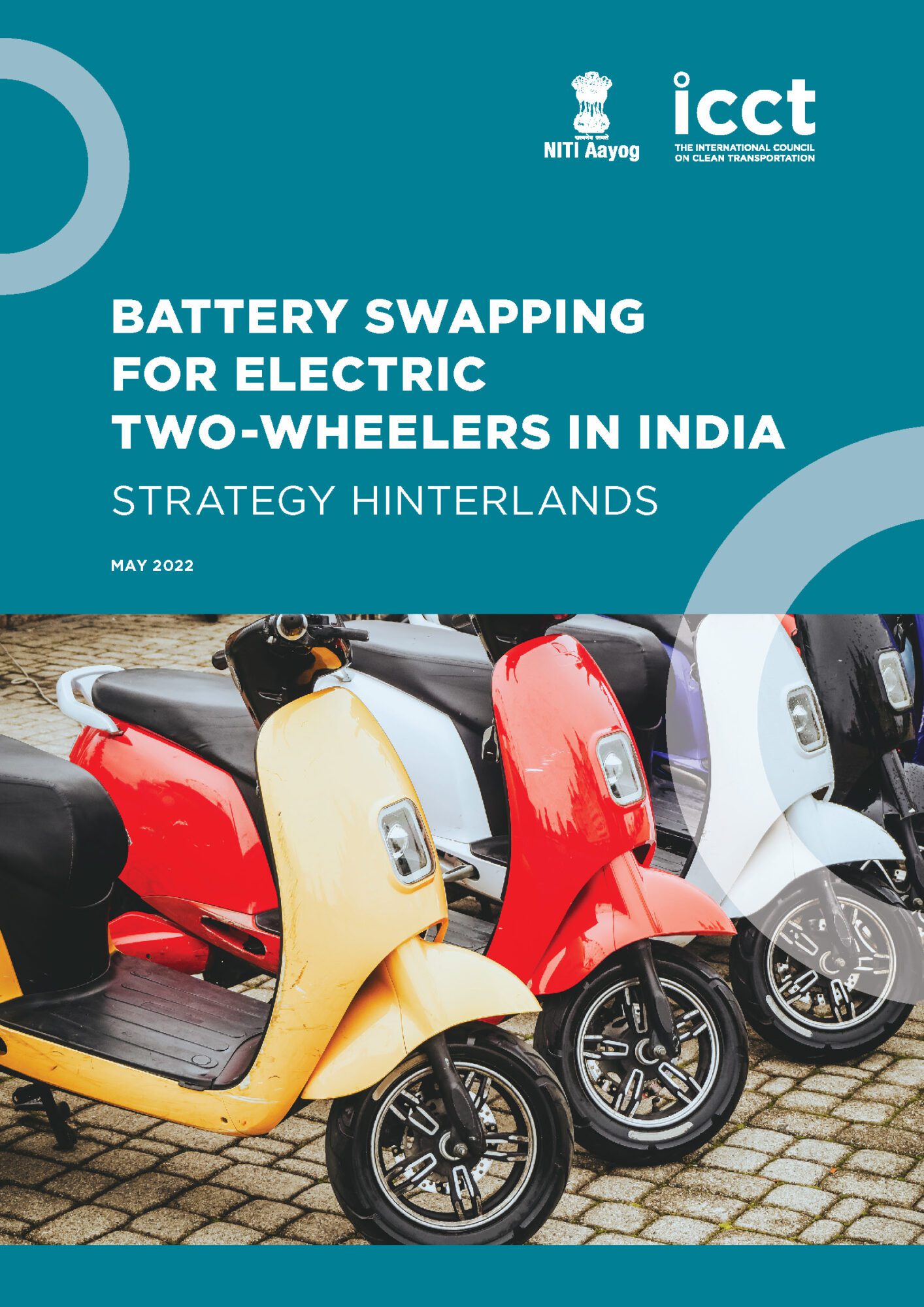Battery swapping for electric two-wheelers in India: Strategy hinterlands
Blog
Can battery swapping accelerate the Indian private bus market’s transition to electric?
This blog was original published on HindustanTimes.
As India develops standards for swappable electric bus batteries to ensure interoperability and ease of battery change, parallelly addressing range anxiety, there continues to be focus on creating common swapping stations for all electric buses. This will improve overall efficiency while reducing infrastructure constraints.
As of early July 2024, 8,583 electric buses were registered across India. That number is set to increase fairly dramatically soon as by 2030, the Indian government intends to replace 800,000 diesel buses with electric buses.
In an effort to boost the adoption of electric buses, the Central Government is planning to implement uniform battery standards for electric buses.
NITI Aayog’s draft Battery Swapping Policy primarily targets the electric two- and three-wheeler segments. However, introducing uniform battery standards for electric buses is expected to enhance interoperability and promote battery swapping within the electric bus sector.
While national schemes such as FAME, National Electric Bus Program, and PM e-Bus Sewa have supported State Transportation Undertakings (STUs) in increasing the number of electric buses in their fleets, electric bus adoption in the private sector is limited. Only a few established private operators with sufficient financial capacity are making noticeable progress.
Currently, there are central government subsidies for STUs to procure electric buses through gross cost contracts (GCC) that cover bus supply, operation, maintenance, charging infrastructure, and driver costs. But for the private sector, which constitutes 94% of the 2.39 million buses registered across India, if not through such subsidy, could battery swapping with certain financial incentives be a catalyst for faster adoption of electric buses?
The International Council on Clean Transportation (ICCT), supported by NITI Aayog, explored battery swapping for electric two-wheelers in India by analysing factors affecting total cost of ownership (TCO). That work provides a strategic framework from which to also explore adopting battery swapping in the private bus market.
Current context
All electric buses in India rely on plug-in charging. To attain a full charge, these typically take 20-40 minutes using DC fast charging or 6-8 hours using lower-powered slow charging. To support the 8 lakh buses by 2030, an overall investment of ₹1.5 trillion ($18 billion) is estimated be required, and this includes the power and upstream infrastructure across cities and on intercity routes. The estimate also includes large spaces for charging stations at every 100 km on each side of highways. The process of land acquisition India is often lengthy and costly, and installing fast charging brings challenges related to not only space and costs, but also power availability and continuous supply on isolated interstate routes in rural areas.
Benefits of battery swapping
Separating batteries from buses would enable battery swapping operators (BSOs) to own the batteries instead of the bus owner. This converts the battery into a variable cost and reduces the upfront capital cost of the bus dramatically, as batteries constitute 40%–50% of this cost. Battery swapping is about as fast as refueling a combustion engine vehicle and typically takes 1-3 minutes. Sun Mobility’s battery swapping station in Ahmedabad required only 33% of the energy and 60% less area than depot-based charging. The strategic deployment of battery swapping stations could help reduce range anxiety, and the short turnaround time of battery swapping instead of opportunity charging may benefit bus operators by lowering overall travel time and thus making the service more desirable to passengers.
The emergence of a battery-swapping industry in India
The industry has advanced towards battery swapping for electric two- and three-wheelers because of the Ministry of Power’s Battery Swapping Stations policy. Delhi led with purchase incentives for swappable EVs, and last-mile service aggregators are improving efficiency with low-cost, swappable vehicles.
In the Union Budget 2022–23, finance minister Nirmala Sitharaman announced plans for a national battery swapping policy with interoperability standards. NITI Aayog is working to standardize the policy across all vehicle segments, and the Heavy industry ministry is set to implement norms for electric buses
Purchase-subsidy based scheme and usage-linked incentives
The ICCT’s battery swapping report included a strategy framework for early policy that highlighted the potential of purchase subsidy and usage-linked incentives for electric two-wheelers. The framework may be considered for its potential to accelerate adoption of private electric buses. Under a purchase-subsidy based scheme, electric buses sold without pre-fitted batteries could qualify for certain financial incentives under national or state-level programs. The incentives could be given to manufacturers, which can then choose to pass them on to registered BSOs that meet safety standards.
Additionally, the usage-linked leasing scheme may allow bus operators to lease swap-capable buses rather than buying them outright. This allows operators to pay fees based on distance or usage, and Macquarie recently launched Vertelo in India, a $1.5 billion platform providing leasing, financing, charging infrastructure, fleet management, and end-of-life vehicle solutions for electric buses.
Battery swapping to potentially enhance electric bus operations
If a network of battery-swapping stations were developed across urban and peri-urban areas, private operators could procure battery-swappable buses and collaborate with a BSO as needed to ensure operational efficiency and reduce time and cost.
The expansion of the highway network, the unavailability of railway tickets, and high airfare also make intercity buses a convenient option, especially for passengers from Tier and Tier 4 cities. It was observed that ticketing for electric buses on Delhi Agra and Delhi Chandigarh routes surged by 150% in 2022. With rising diesel prices and improved electric bus technology, new electric buses can now travel 250–300 km per charge, covering 40% of India’s intercity trips. With less space requirements, battery-swapping stations can be strategically placed along highways and if interoperability is achieved, private operators could subscribe to highway-based battery swapping services from suitable BSOs.
In the case of BasiGo in Kenya and in Shenzhen, China, buses were procured without pre-fitted batteries. Shenzhen Bus Group (SZBG) in China did not ultimately opt for battery swapping due to a lack of battery standardization, safety concerns, and the absence of subsidies for BSOs. But for more than 2 million buses across India with over 26,000 private operators, interoperability through standardization of batteries and creating an ecosystem of battery swapping might hold the key for some. Prioritizing policies for battery standardization and interoperability through a consensus-driven approach would help build a solid foundation for scalable and efficient integration of electric buses into India’s transport systems.
Author
Related Publications

BATTERY SWAPPING FOR ELECTRIC TWO-WHEELERS IN INDIA: STRATEGY HINTERLANDS
Explores the landscape of battery swapping for two-wheelers and evaluates the influence of different components on total cost of ownership (TCO) to suggest areas ripe for strategy focus.

